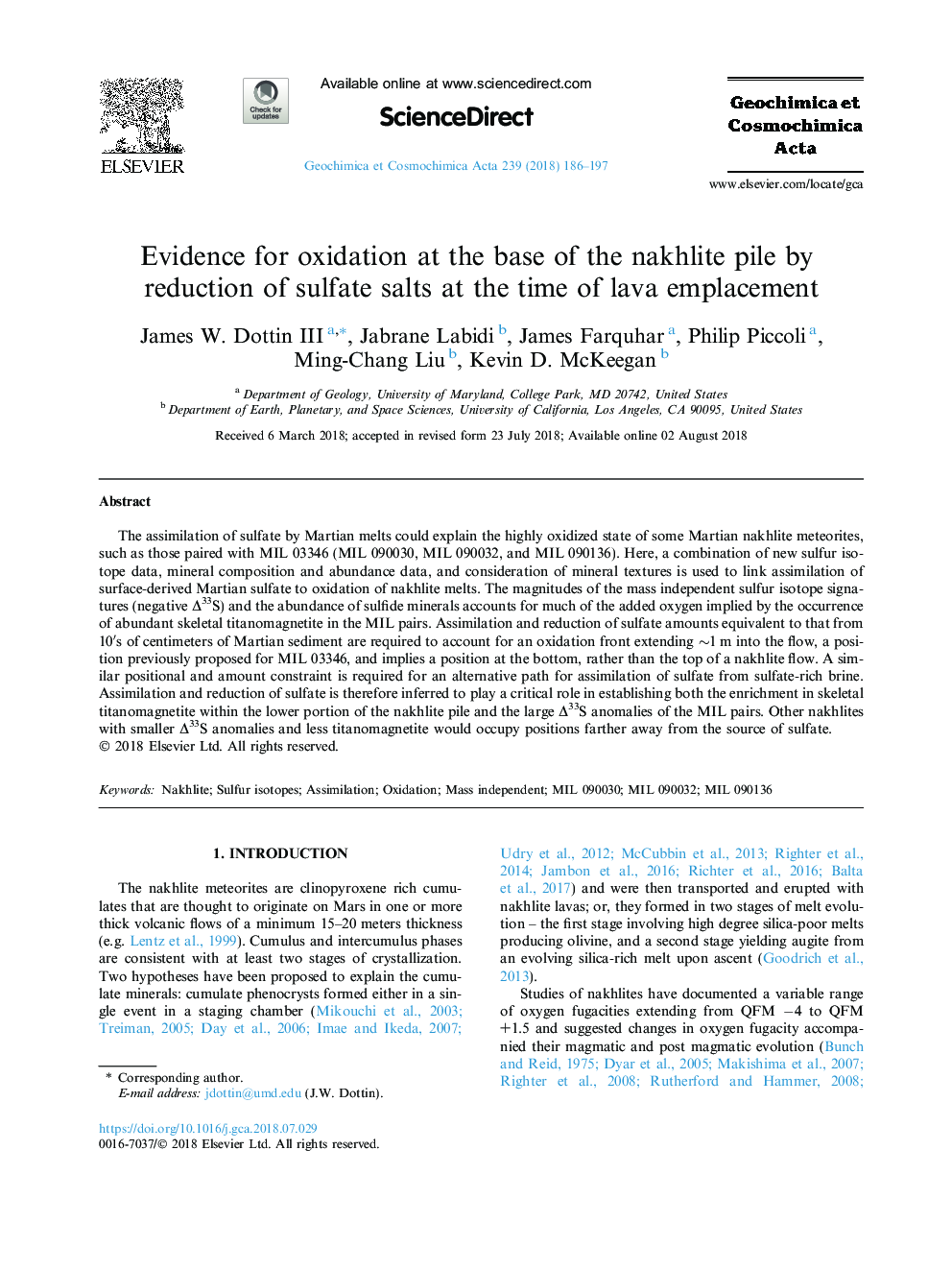| Article ID | Journal | Published Year | Pages | File Type |
|---|---|---|---|---|
| 8910571 | Geochimica et Cosmochimica Acta | 2018 | 12 Pages |
Abstract
The assimilation of sulfate by Martian melts could explain the highly oxidized state of some Martian nakhlite meteorites, such as those paired with MIL 03346 (MIL 090030, MIL 090032, and MIL 090136). Here, a combination of new sulfur isotope data, mineral composition and abundance data, and consideration of mineral textures is used to link assimilation of surface-derived Martian sulfate to oxidation of nakhlite melts. The magnitudes of the mass independent sulfur isotope signatures (negative Î33S) and the abundance of sulfide minerals accounts for much of the added oxygen implied by the occurrence of abundant skeletal titanomagnetite in the MIL pairs. Assimilation and reduction of sulfate amounts equivalent to that from 10â²s of centimeters of Martian sediment are required to account for an oxidation front extending â¼1â¯m into the flow, a position previously proposed for MIL 03346, and implies a position at the bottom, rather than the top of a nakhlite flow. A similar positional and amount constraint is required for an alternative path for assimilation of sulfate from sulfate-rich brine. Assimilation and reduction of sulfate is therefore inferred to play a critical role in establishing both the enrichment in skeletal titanomagnetite within the lower portion of the nakhlite pile and the large Î33S anomalies of the MIL pairs. Other nakhlites with smaller Î33S anomalies and less titanomagnetite would occupy positions farther away from the source of sulfate.
Related Topics
Physical Sciences and Engineering
Earth and Planetary Sciences
Geochemistry and Petrology
Authors
James W. III, Jabrane Labidi, James Farquhar, Philip Piccoli, Ming-Chang Liu, Kevin D. McKeegan,
